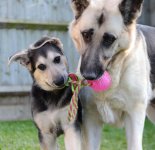To learn, have a think through each of those suggested settings.....
The aperture needs to be narrow (High number) to keep everything in focus. (Good for landscapes)
Matrix metering mode will meter your exposure over the whole frame not just part of it (Good for landscapes)
ISO, well lower is better, but use that to allow narrow aperture and a good shutter speed. Remember EVERYTHING is better using a tripod!
I don't understand how you could set a shutter speed, and then select "A" mode (Aperture priority)... A mode will adjust the shutter speed to expose correctly at a given aperture.
Of course, all of this depends on the scene, time of day, weather etc..... Read through the various posts, and take what you know about the three components of exposure (Shutter speed, aperture and ISO) and experiment.

